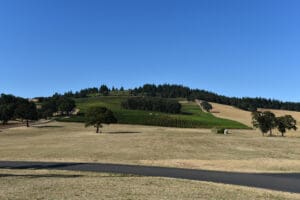Southern Oregon is quickly becoming one of the fastest-growing wine regions in the United States. As of 2023, there are over 300 vineyards in the region, with over 10,000 acres of vineyards planted, valued at over $200 million annually. With over 200 wineries in the area, the wine industry in Southern Oregon is booming. One of the primary factors contributing to the growth of the wine industry in Southern Oregon is the region’s unique microclimate. Influenced by the Pacific Ocean, the Cascade Mountains, and the Siskiyou Mountains, the region’s climate allows for the growth of a wide variety of grapes, including Cabernet Sauvignon, Chardonnay, Pinot Noir, Syrah, and Zinfandel. This has enabled local and national winemakers to invest in the region, planting and producing high-quality wines that have won numerous awards at international wine competitions. If you are considering rural property in Southern Oregon, there are a few things that residents living next to a vineyard should be aware of.
 Land use regulations
Land use regulations
It’s important to note that vineyards are subject to land use regulations, just like any other agricultural operation. These regulations are in place to protect the health and safety of nearby residents and preserve the integrity of the land. If you’re considering purchasing a property next to a vineyard, it’s a good idea to familiarize yourself with local zoning laws and land use regulations. These regulations can vary depending on the location, so it’s essential to do your research before making any decisions.
In Oregon, vineyards are subject to several land use regulations designed to protect the environment and preserve the quality of life in rural communities. Here are some of the regulations that vineyards may be subject to:
- Agricultural zoning: Most vineyards are located in areas zoned for agricultural use. This zoning protects farmland from development and ensures it is used for agriculture.
- Water use regulations: Vineyards in Oregon are subject to rules governing their water use. These regulations are designed to ensure that there is enough water for all users, including farmers, municipalities, and wildlife.
- Pesticide use regulations: Oregon has strict rules governing the use of pesticides in agriculture. These regulations require farmers to follow specific pesticide protocols to ensure they are used safely and do not harm the environment or human health.
- Setbacks: Oregon requires vineyards to maintain certain setbacks from streams, wetlands, and other sensitive areas to protect water quality and wildlife habitat.
- Right to Farm: Oregon has a Right to Farm law that protects farmers from nuisance complaints related to normal farming activities, including noise and odors associated with vineyard operations.
Noise and spray operations
Like any other farming operation, vineyards can generate noise from field equipment such as tractors, sprayers, and wind machines. In the spring, bird control devices such as cannons and bird distress calls may also be used near harvest. While these operations can be noisy, it’s important to remember that they are normal and protected by the state Right to Farm Bill.
Another consideration for residents living next to a vineyard is pesticide use. The most common pesticide used in Southern Oregon vineyards is sulfur, which controls powdery mildew. While sulfur is generally safe, it can emit an odor some individuals find offensive. If you have any concerns about pesticide use, you should talk to the vineyard owner or manager to learn more about their practices.
Herbicide use
Perhaps the most important thing to know if you live next to a vineyard is that certain herbicides, such as phenotype herbicides like Crossbow, can devastate vineyards. Homeowners commonly use these herbicides for poison oak, wild blackberry, and thistle control. Even small quantities of these herbicides can disperse widely during high temperatures and be carried on the wind for miles, potentially causing damage to nearby vineyards.
If you need to use an herbicide on your property, it’s essential to be mindful of the potential impact on nearby vineyards. If the herbicide application can be traced to your property, you may be fined by the Oregon Department of Agriculture for spray drift and must pay for all damage and losses incurred by the vineyard.
Get all your questions answered about living next to a vineyard or other farmland from Richard Stevens & Associates.
If you have questions about how your potential neighbors will impact the livability of your parcel of land, contact the professionals at Richard Stevens & Associates. We’re a land-use consulting firm located in Medford, Oregon. Our team can guide you through obtaining rural and urban land use planning permits throughout all Southern Oregon counties and beyond. With expertise at your side, you’ll be able to navigate the complex systems to obtain the land use permits you need for your next project. Give us a call at 541-773-2646 to get started!

 Land use regulations
Land use regulations